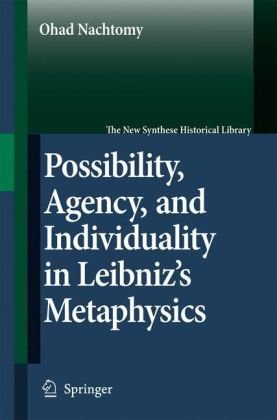

Most ebook files are in PDF format, so you can easily read them using various software such as Foxit Reader or directly on the Google Chrome browser.
Some ebook files are released by publishers in other formats such as .awz, .mobi, .epub, .fb2, etc. You may need to install specific software to read these formats on mobile/PC, such as Calibre.
Please read the tutorial at this link: https://ebookbell.com/faq
We offer FREE conversion to the popular formats you request; however, this may take some time. Therefore, right after payment, please email us, and we will try to provide the service as quickly as possible.
For some exceptional file formats or broken links (if any), please refrain from opening any disputes. Instead, email us first, and we will try to assist within a maximum of 6 hours.
EbookBell Team

4.3
48 reviewsThis work presents Leibniz’s subtle approach to possibility and explores some of its consequential repercussions in his metaphysics. Ohad Nachtomy presents Leibniz’s approach to possibility by exposing his early suppositions, arguing that he held a combinatorial conception of possibility. He considers the transition from possibility to actuality through the notion of agency; the role divine agency plays in actualization; moral agency and human freedom of action and the relation between agency and necessity in comparison to Spinoza. Nachtomy analyzes Leibniz’s notion of nested, organic individuals and their peculiar unity, in distinction from his notion of aggregates.
Nachtomy suggests that Leibniz defined possible individuals through combinatorial rules that generate unique and maximally consistent structures of predicates in God’s understanding and that such rules may be viewed as programs for action. He uses this definition to clarify Leibniz’s notions of individuation, relations and his distinction between individual substances and aggregates as well as the notion of organic individuals, which have a nested structure to infinity. Nachtomy concludes that Leibniz’s definition of a possible individual as a program of action helps clarifying the unity and simplicity of nested individuals. The book thus reveals a thread that runs through Leibniz’s metaphysics: from his logical notion of possible individuals to his notion of actual, nested ones.